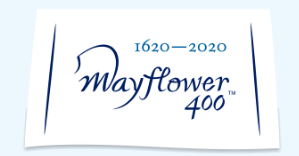


Menu

Search the PDAS site


As many of you know this took place over the weekend of 11th and 12th September. We only learned a short time before that the University would be able to host us for real on the Saturday so we had to finalise the arrangements quickly. Despite the frantic organisation everything went smoothly to plan and all concerned – the University personnel, the speakers and our audience seemed really happy to be involved in a significant live event after such a long break. We had to restrict attendance to meet Covid restrictions. Our thanks in particular go to the Arts Institute for giving us the excellent venue in the Levinsky Theatre and the Atrium.
As I said in my opening address, the idea was hatched in 2017 in a pub by Keith Ray, former City Archaeologist, and the whole event finished in a pub, the Lord High Admiral, on the Sunday evening. A consortium of interested organisations was first formed and gradually plans took. The title was carefully chosen and proved to be most appropriate.
With funds from the Mayflower 400 Sparks fund and the Heritage Lottery Fund we planned a day of talks and different events in local communities in the lead up to that day. We employed Dr. Harriet Dismore to organise the community events and unfortunately she was immediately faced with the Covid restrictions so had to adapt accordingly.
The day of talks was introduced by the Deputy Town Crier, David Green, giving a rousing Cry relevant to the time [SYMPOSIUM PROGRAMME]. The Keynote lecture was given by Professor Mark Stoyle who set the historical scene here of strong dissent and resistance which characterised our local population[Talk on Western Rebellion]. This was followed by Professor Robert Stone and his amazing Virtual Reality of the Mayflower and the Barbican in 1620 [HIT Team Mayflower]. So this was what we would have seen then. Delegates queued to experience the VR in the Atrium in breaks.
Professor Keith Ray then gave the appropriate archaeological perspective on both the people and the place drawing on his experience and work during his six year tenure here as City Archaeologist. Chris Robinson, our well known local historian, then talked about the worthies of the time and described four of their houses which amazingly still stand.
The afternoon session began with Dr Harriet Dismore describing the community events [Plymouth 1620 in the Community]: first the Turnchapel guided walk, (with accompanying book) and the colourful lamppost banners made by the local history group. These were displayed hanging down from above in the Atrium. With the Ham Woods group and Dr. Tina Tuohy, she produced a guide to the ancient woods and the adjoining ancient Weston Mill. Members and guests were able to enjoy guided walks of both places in the summer.
Harriet’s last project was the very popular shanty competition. This had 31 original entries and we heard some of the winning entry that day. Harriet was followed by a sobering and detailed account by Laura Quigley of the multiple health hazards of the time both on land and on the Mayflower.
Dr. Todd Gray then gave a rousing paper[Plymouth and its fishermen before 1620], starting with his childhood experiences of cod fishing in Newfoundland, on the extensive fishing routes at that time and how the experiences of those fishermen were fundamental to the establishment of the new colony. John Allan followed with more evidence of our interconnectedness with the world[Plymouth pot -
Martin Read gave the final paper on the Defences of the town in 1620 [The Defences of Plymouth in 1620] . He covered the various fortifications and available armaments. Funds were clearly tight then and the state of both defences and weaponry was perhaps somewhat worrying. On the Sunday Martin Read and Nigel Overton led a popular walk from the Prysten House and onto the Barbican and Hoe which ended conveniently near the Lord High Admiral. Harriet had worked hard with the landlords of the LHA who were delighted to be able to host us. It was the first event after a long break for them too. We were well fed and somehow M.C. Harriet managed to get a number of shanty groups of various ages to entertain us. We heard the winning shanty “Rolling to America” plus an encore. It was a wonderful way to finish the weekend.
Anne Kolaszynska-
October 2021
The Long Awaited Symposium:
Plymouth 1620: The Place, the People, the Evidence.
A Summary of the Symposium
11th & 12 Sept 2021
| January |
| February |
| March |
| April |
| May |
| June |
| July |
| August |
| Septmber |
| October |
| November |
| December |
| Pollen Analysis |
| Archaeology of Gardens |
| Identifying Prehistoric Pottery |